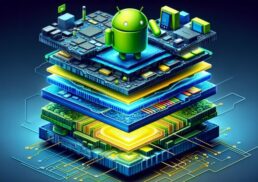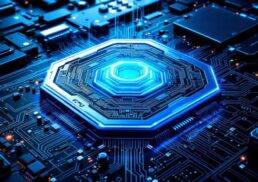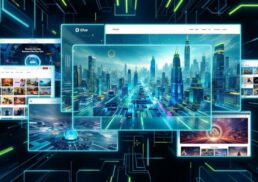Imagine restoring old family photos, repairing damaged images, or enhancing low-resolution portraits with just a few clicks. GFPGAN, a cutting-edge algorithm for real-world face restoration, makes this possible. This powerful tool leverages generative facial prior and trained face GANs to produce high-quality, identity-preserving restorations, making it a game-changer in the field of computer vision.
In this blog post, we will explore GFPGAN in-depth, covering its underlying principles, installation process, utilization of pre-trained models, and much more. By the end, you will have a comprehensive understanding of this revolutionary technology and how to harness its potential to enhance your photo restoration projects.
Table of Contents
Short Summary
GFPGAN is a practical algorithm for face restoration utilizing pretrained GANs and generative facial priors to achieve high-quality, natural results.
System requirements include Windows 10 or higher with a discrete Nvidia video card (GPU) with at least 4 GB VRAM.
GFPGAN can be used in real world scenarios through carefully selecting the right model, digitizing photos and integrating into existing workflows using APIs.
Understanding GFPGAN: A Practical Algorithm for Face Restoration

GFPGAN is specifically designed for real-world face restoration, excelling at restoring old photos or AI-generated faces. It employs a generative facial prior, which is a concept used in face restoration algorithms to incorporate prior knowledge or information about facial features and characteristics. This results in more natural restoration outcomes, making it a practical algorithm for various applications in computer vision.
The key to GFPGAN’s success lies in its utilization of trained face GANs. These GANs have been trained on large datasets of face images, providing rich and diverse priors that enhance the quality of the generated facial features. By synthesizing realistic facial features from a given image, GFPGAN produces high-quality results in blind face restoration and ensures better identity preservation.
The Role of Generative Facial Prior
Generative facial prior plays a crucial role in GFPGAN, enabling it to restore facial features more accurately. It acts as one of the useful face relation functions, leveraging trained models and facial priors to generate true-to-life facial details in the reconstructed face.
As a practical example, consider using GFPGAN as a face restoration helper to restore a photograph of an individual who has aged significantly since the photo was taken. GFPGAN can leverage facial priors to generate a more precise and realistic representation of the individual’s face, providing a glimpse of the past with surprising accuracy.
Pretrained Face GAN: The Key to Better Identity Preservation
Pretrained face GANs are essential for identity preservation in GFPGAN. These GAN models are trained on large datasets of face images, generating realistic and high-quality face images based on learned patterns and features from the training data.
When restoring old or damaged photos, the generated image should be as close to the original as possible. Thanks to the diverse priors encapsulated in trained face GANs, GFPGAN produces images that have a higher likelihood of preserving the identity of the individual in the input image.
The application of trained face GANs showcases the power of pattern recognition in face restoration, making GFPGAN a go-to tool for preserving cherished memories.
Installing and Setting Up GFPGAN
Before diving into the incredible world of GFPGAN, it’s essential to ensure that your system meets the necessary requirements and that the installation process is completed smoothly. GFPGAN requires a Windows 10 or higher operating system and a discrete Nvidia video card (GPU) with a minimum of 4 GB RAM for optimal performance.
The installation process involves cloning the GFPGAN repository and installing the necessary packages. In the following sections, we will delve into the specifics of system requirements and the installation process.
System Requirements
To run GFPGAN effectively, it’s crucial to have the right hardware and software setup. Your system should have a Windows 10 or higher operating system, as well as a discrete Nvidia video card (GPU) with at least 4 GB of RAM. Meeting these requirements will ensure a smooth experience while working with GFPGAN and processing input images.
Having the right setup is essential for GFPGAN to run properly. With the right hardware.
Installation Process
To begin setting up GFPGAN on your system, start by following these steps:
Install Python and Git on your machine.
Clone the GFPGAN repository to your local machine using the command: git clone https://github.com/TencentARC/GFPGAN.git
Acquire the necessary model file for GFPGAN.
With the repository cloned and the model file in place, you can now run the GFPGAN web UI, which provides an interactive interface for working with the tool. This will allow you to upload images, adjust settings, and perform face restoration tasks using GFPGAN.
Utilizing Pre-trained Models for Quick Inference

Pre-trained models are an essential component of GFPGAN, allowing for quick inference and improved restoration results. These models have been previously trained on large datasets and can be used to efficiently process images and generate accurate facial features.
You can find pre-trained models for GFPGAN on the GFPGAN GitHub page. By leveraging these pre-trained models, you can swiftly infer facial features of an individual from an image, making it an invaluable resource for your face restoration projects.
Available Pre-trained Models
GFPGAN offers several pre-trained models, each with their respective capabilities. These models have been trained on large datasets, such as the FFHQ dataset, which consists of approximately 70,000 high-quality images.
When preparing to use GFPGAN, it’s crucial to select the appropriate pre-trained model based on the task at hand. The right model will ensure optimal results and enhance the accuracy and speed of face restoration. By understanding the capabilities of each available model, you can make an informed decision and achieve the best possible outcome for your project.
How to Use Pre-trained Models
In order to use pre-trained models in GFPGAN, you can follow these steps:
Open the notebook “Run-GFPGAN.ipynb”.
Execute all the cells in the notebook.
This will load the pre-trained model.
You can then pass an input image through the model for quick inference.
By utilizing pre-trained models, you can significantly reduce the time and effort required for face restoration tasks. This not only streamlines your workflow, but also ensures that you achieve more natural restoration results with minimal effort.
Training Your Own GFPGAN Model
Training your own GFPGAN model may be necessary if you have specific requirements or unique datasets. To train a GFPGAN model, you will need a substantial dataset of face images, GFPGAN training codes, and the ability to modify landmarks and masks.
In this section, we will discuss the process of dataset preparation and configuration, providing you with the necessary knowledge to train your custom GFPGAN model.
Dataset Preparation
To prepare a dataset for GFPGAN, follow these steps:
Start by selecting high-quality face images.
The GFPGAN model is pretrained on the FFHQ dataset, which is composed of approximately 70,000 high-quality images.
Resize the images to 512×512 pixels for optimal results.
Next, split the dataset into training and validation sets. This ensures that you have a representative sample to evaluate the performance of your model during training and make any necessary adjustments.
Configuration and Training
Once your dataset is ready, it’s time to configure and train your GFPGAN model. This involves setting up the model, adjusting the hyperparameters, and executing the training process.
After training, evaluate the restored faces and adjust the model if needed. This ensures that your custom GFPGAN model provides the best possible results for your specific face restoration tasks.
Restoring Photos with GFPGAN: A Practical Example
Let’s explore a practical example of restoring photos using GFPGAN. Suppose you have an old family photo that has been damaged or has faded over time. GFPGAN can help you restore the photo by leveraging its powerful face restoration capabilities.
In this section, we will discuss the process of model selection and the restoration process, providing you with a clear understanding of how to use GFPGAN in real-world scenarios.
Choosing the Right Model
When selecting a GFPGAN model for your restoration project, consider the type of photos being restored, the desired output quality, and the available pre-trained models. GFPGAN offers two main types of models: a pre-trained model, which has already been trained on a large dataset for quick inference; and a custom-trained model, which is trained on a specific dataset for more specific tasks.
By evaluating these factors and developing practical algorithms, you can choose the most suitable model for your project and achieve the best possible results.
Restoration Process
With the appropriate model selected, it’s time to begin the restoration process of your original paper model. Start by digitizing the old image, either by scanning or photographing it. Then scale up the image to ensure improved results.
Next, use GFPGAN to restore the image quality by applying a generative facial prior. Once the restoration process is complete, you can save and compare the restored photo with the original to evaluate the results.
This practical example demonstrates the power of GFPGAN in transforming old or damaged photos into clear, high-quality images.
Integrating GFPGAN into Your Workflow
GFPGAN can be seamlessly integrated into your workflow, enhancing your photo restoration capabilities and simplifying the process. By using APIs and combining GFPGAN with other tools, you can unlock even greater potential in your projects.
In this section, we will explore how to integrate GFPGAN into your workflow through the use of APIs and the combination of GFPGAN with other tools.
Using GFPGAN with APIs
GFPGAN offers two APIs for seamless integration into your projects: GFPGAN.Built-in and GFPGAN.Custom. The GFPGAN.Builtin API is a pre-trained model designed for rapid inference with minimal configuration and setup. On the other hand, the GFPGAN.Custom API is a custom model that can be trained on a specific dataset, requiring more configuration and setup.
By leveraging these APIs, you can easily incorporate GFPGAN into your projects, simplifying the face restoration process and improving the overall quality of your work.
Combining GFPGAN with Other Tools
In addition to using APIs, GFPGAN can be combined with other tools to further enhance its photo restoration capabilities. This allows you to create a powerful, integrated solution for your projects, improving the quality of your restorations and streamlining your workflow.
By exploring different combinations of tools and GFPGAN, you can unlock new possibilities and capabilities in your photo restoration projects, ensuring natural restoration results and a seamless, efficient workflow.
Summary
GFPGAN has revolutionized the world of face restoration. By leveraging generative facial prior and trained face GANs, GFPGAN produces high-quality, identity-preserving restorations, making it a powerful tool for various applications in computer vision. With the knowledge gained in this blog post, you are now equipped to harness the power of GFPGAN in your projects, restoring old photos, enhancing low-resolution images, and unlocking new creative potential.
We encourage you to explore GFPGAN further, integrating it into your workflow, and discovering the incredible possibilities this groundbreaking technology offers. The future of face restoration is here, and it’s called GFPGAN.
Frequently Asked Questions
What is Gfpgan for?
GFP-GAN is a generative adversarial network for blind face restoration which uses Generative Facial Prior (GFP) incorporated into the process via channel-split spatial feature transform layers for realness and fidelity balance.
The GFP is used to ensure that the generated face is realistic and has a high degree of fidelity to the original image. This is achieved by splitting the image into different channels and applying a spatial feature transform layer to each channel. This helps to balance the realness and fidelity of the generated face.
Is Gfpgan open source?
GFPGAN is an open-source app available for free use on GitHub.
What is the full form of Gfpgan?
GFP-GAN stands for Generative Facial Prior Generative Adversarial Network, which is a machine learning model used to restore blind faces using a Generative Facial Prior (GFP). This prior is incorporated into the face restoration process via channel-split spatial feature transform layers.
How does GFPGAN utilize generative facial prior?
GFPGAN utilizes generative facial prior to generate realistic facial features from a given image, resulting in high-quality blind face restoration.
What are the system requirements for GFPGAN?
GFPGAN requires Windows 10 or higher and an Nvidia GPU with at least 4 GB of RAM for optimal performance.









